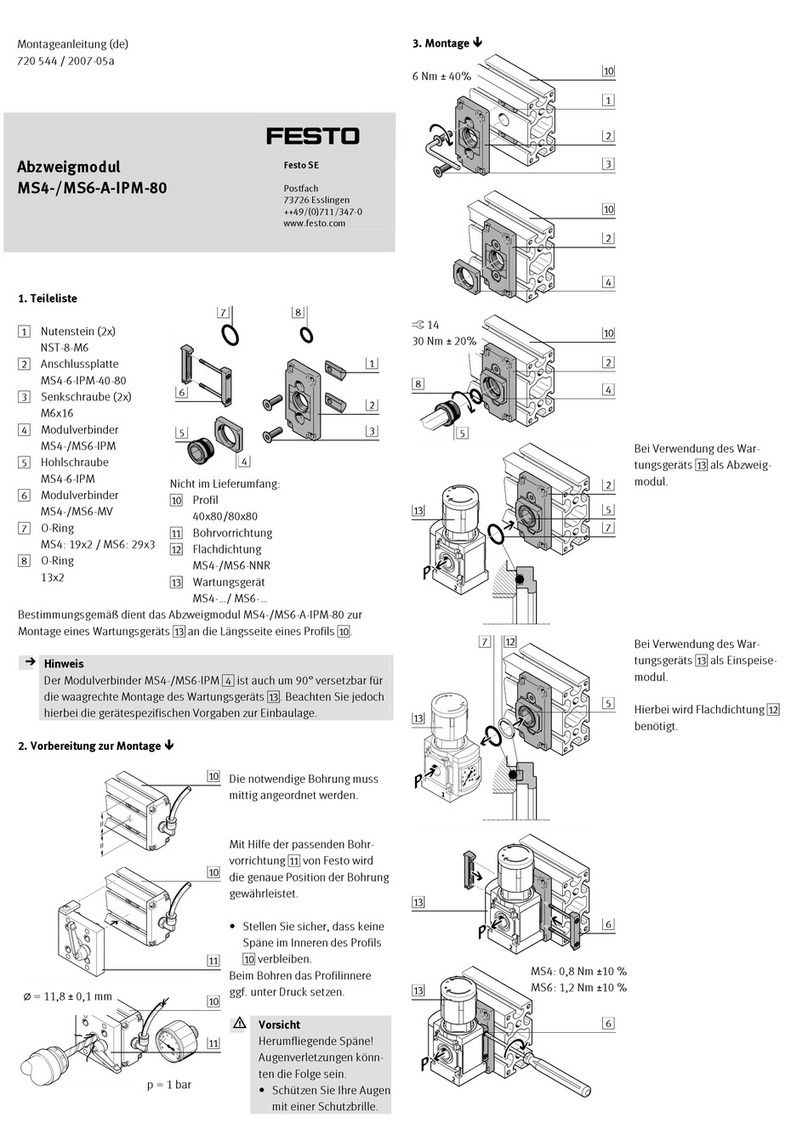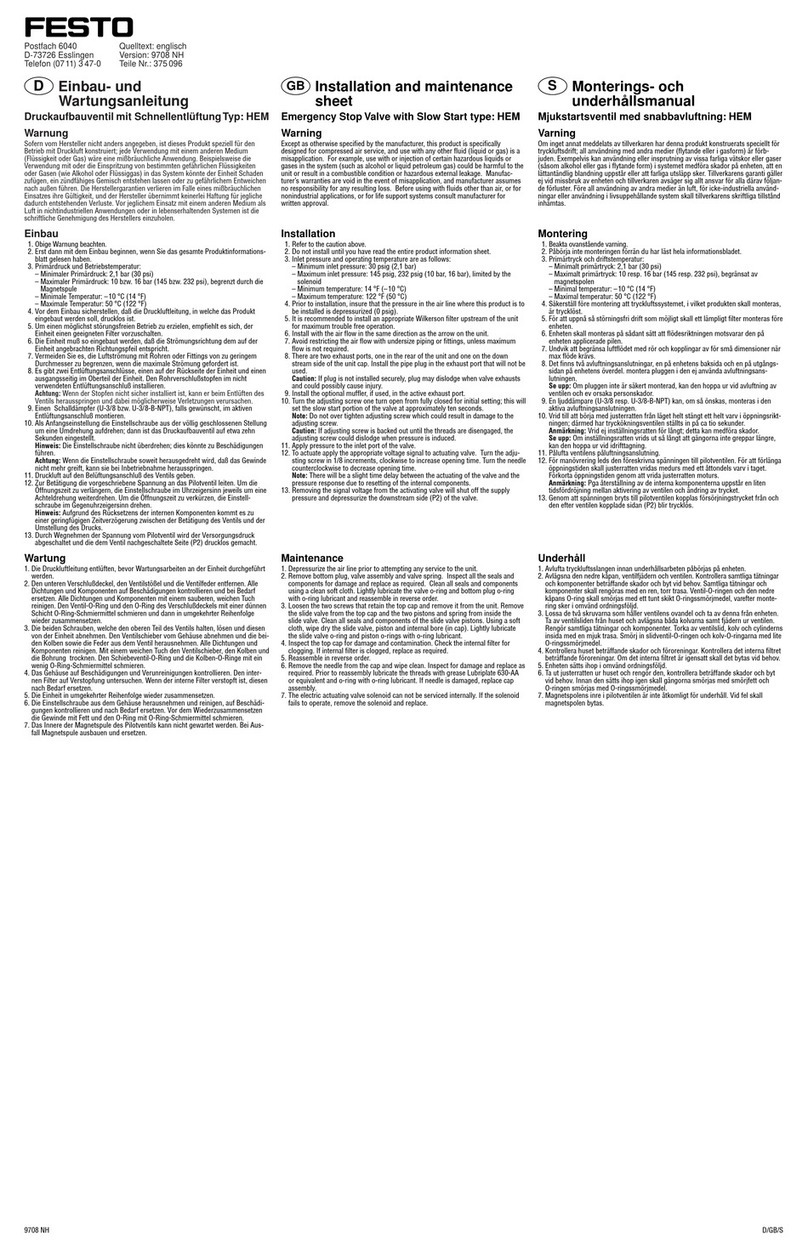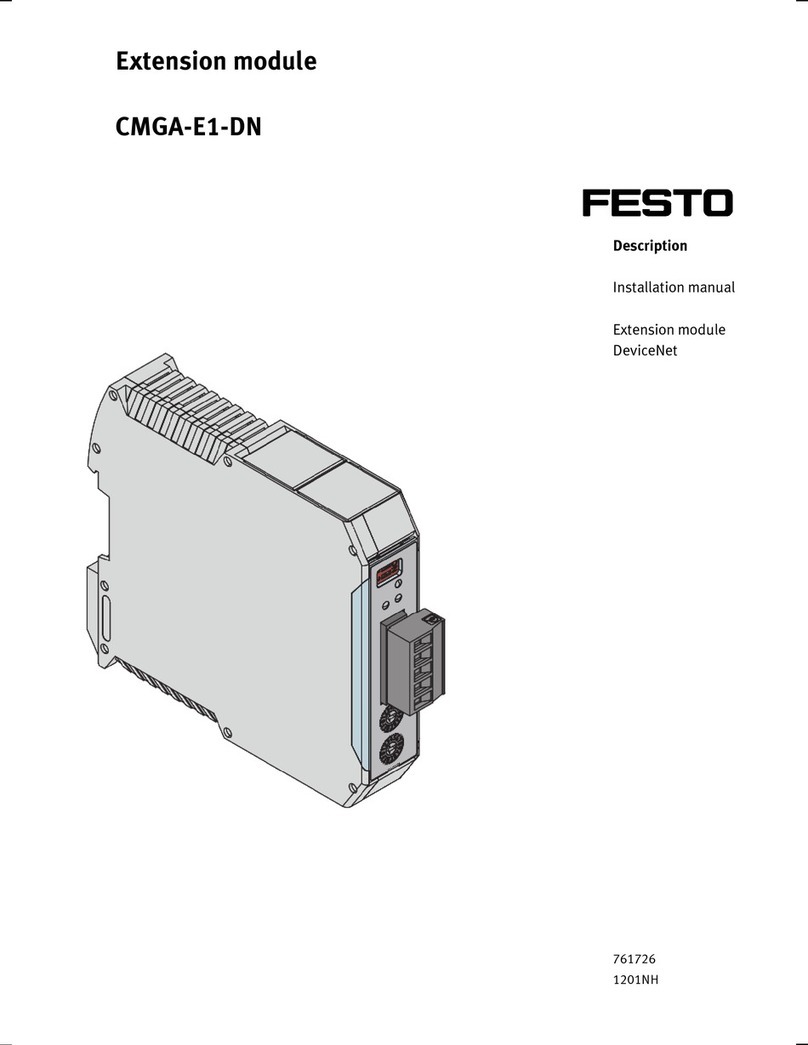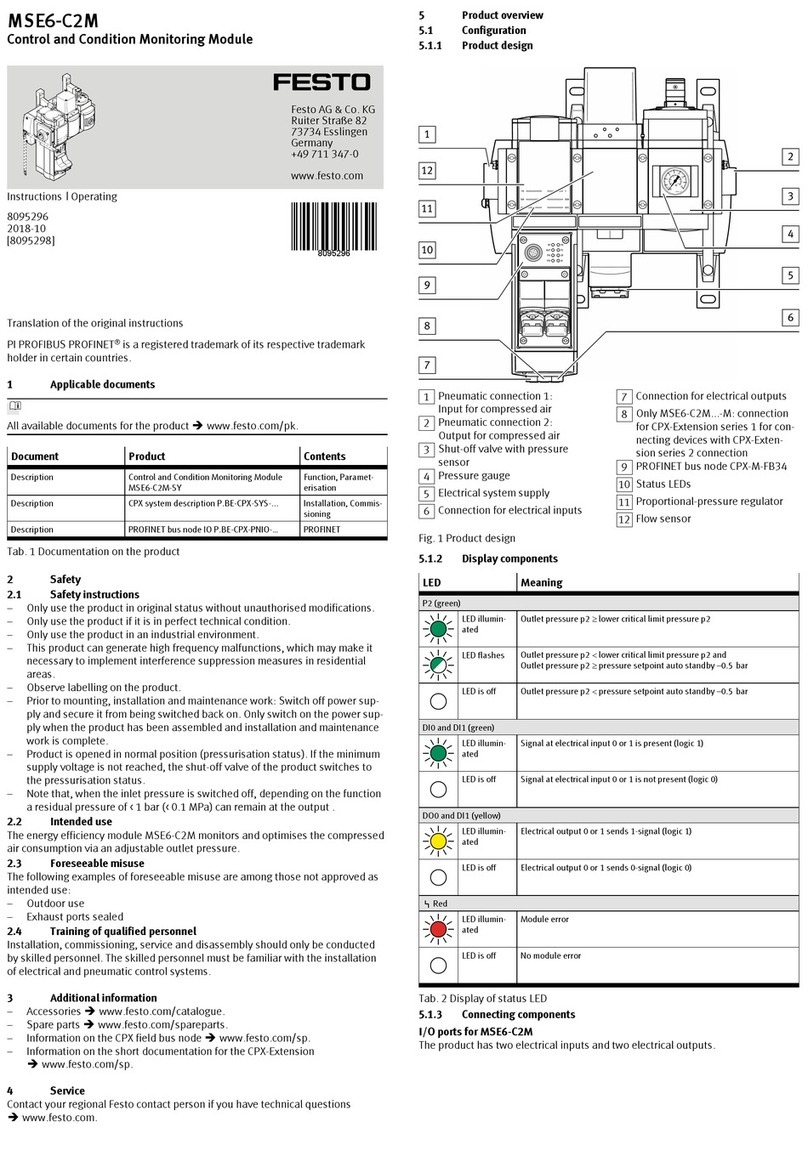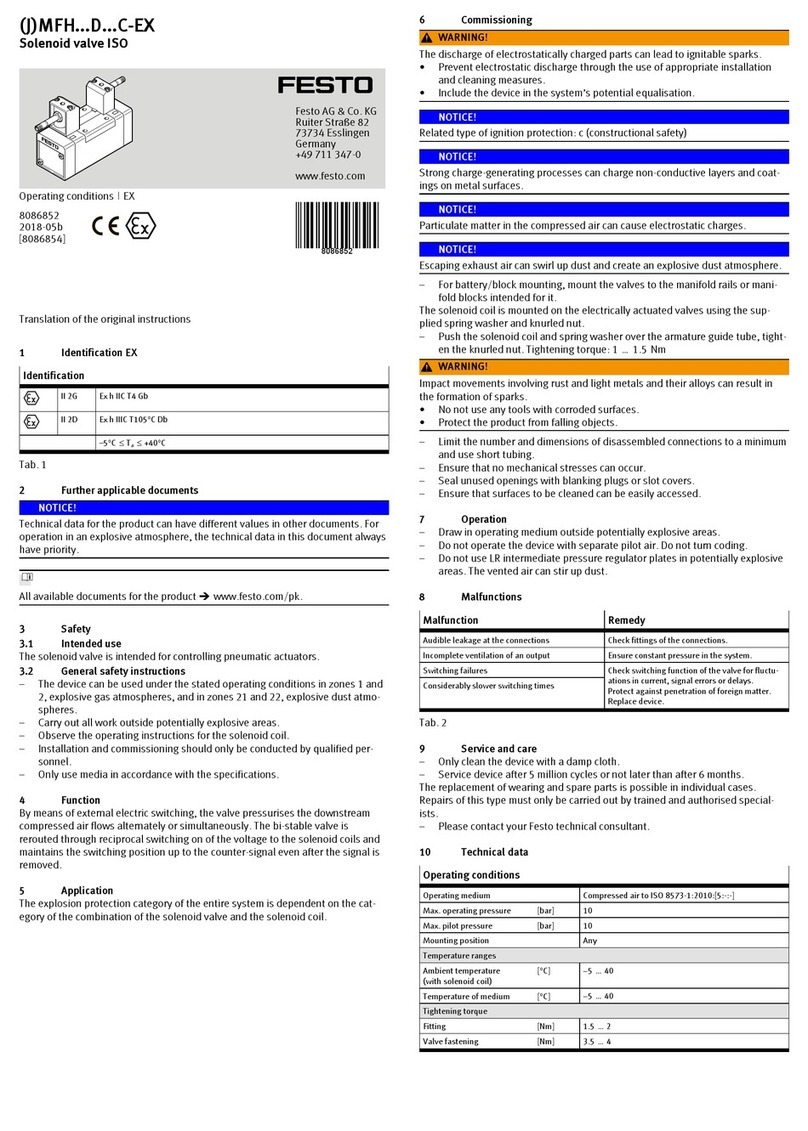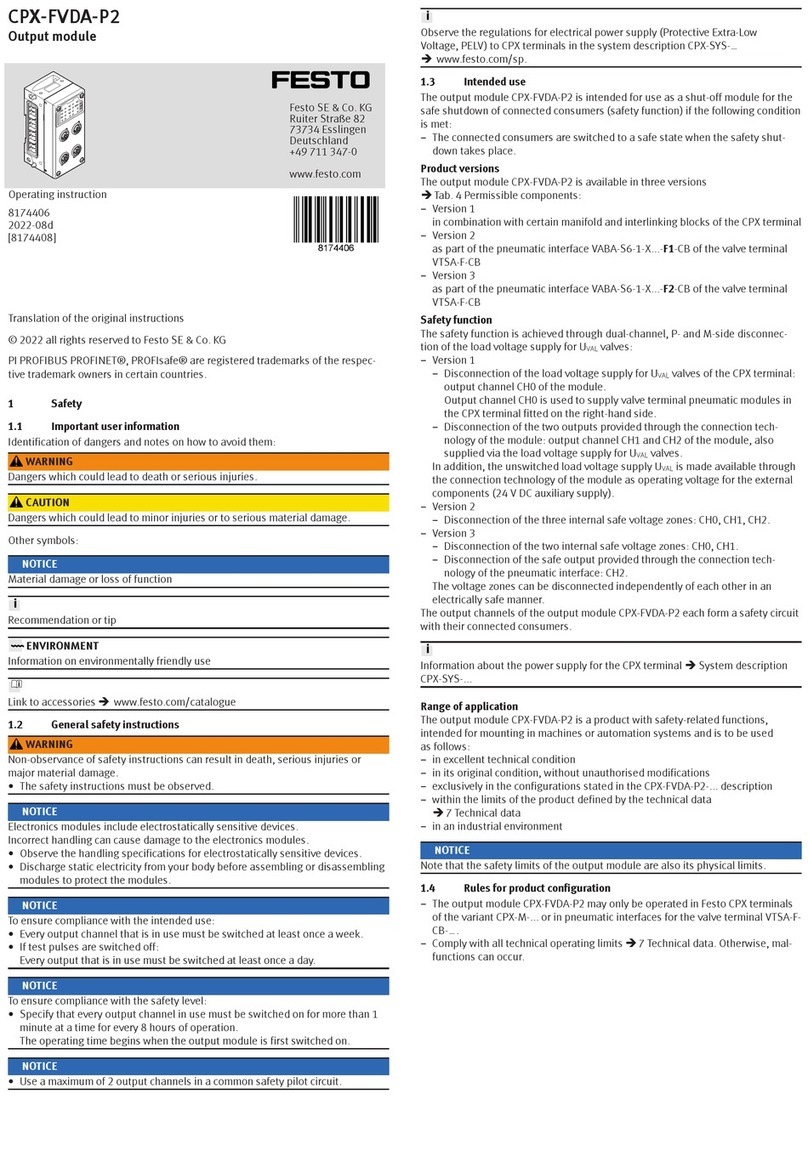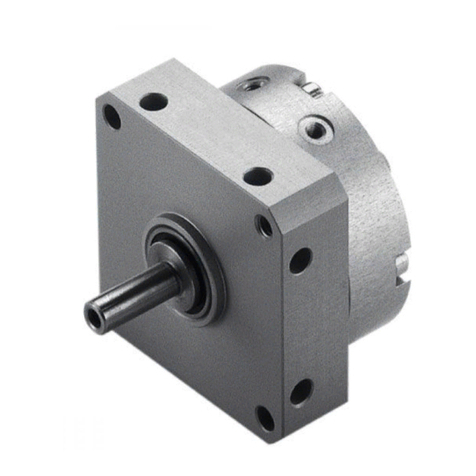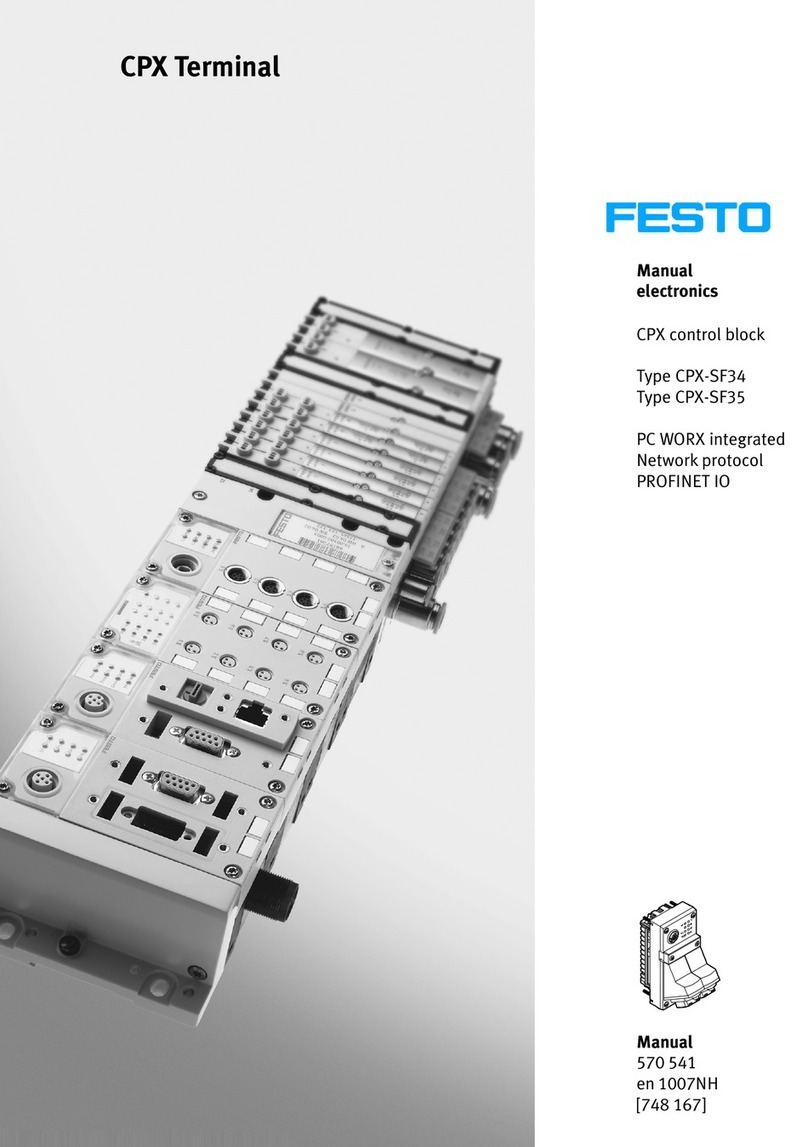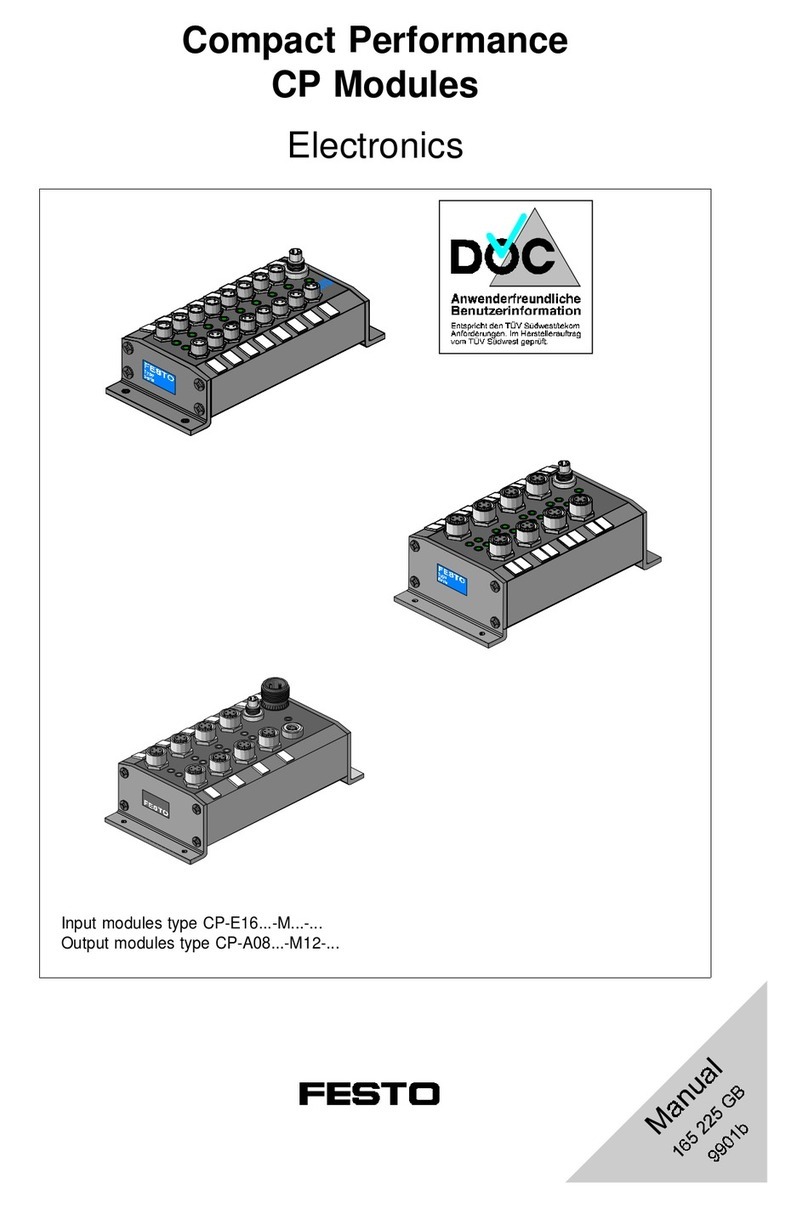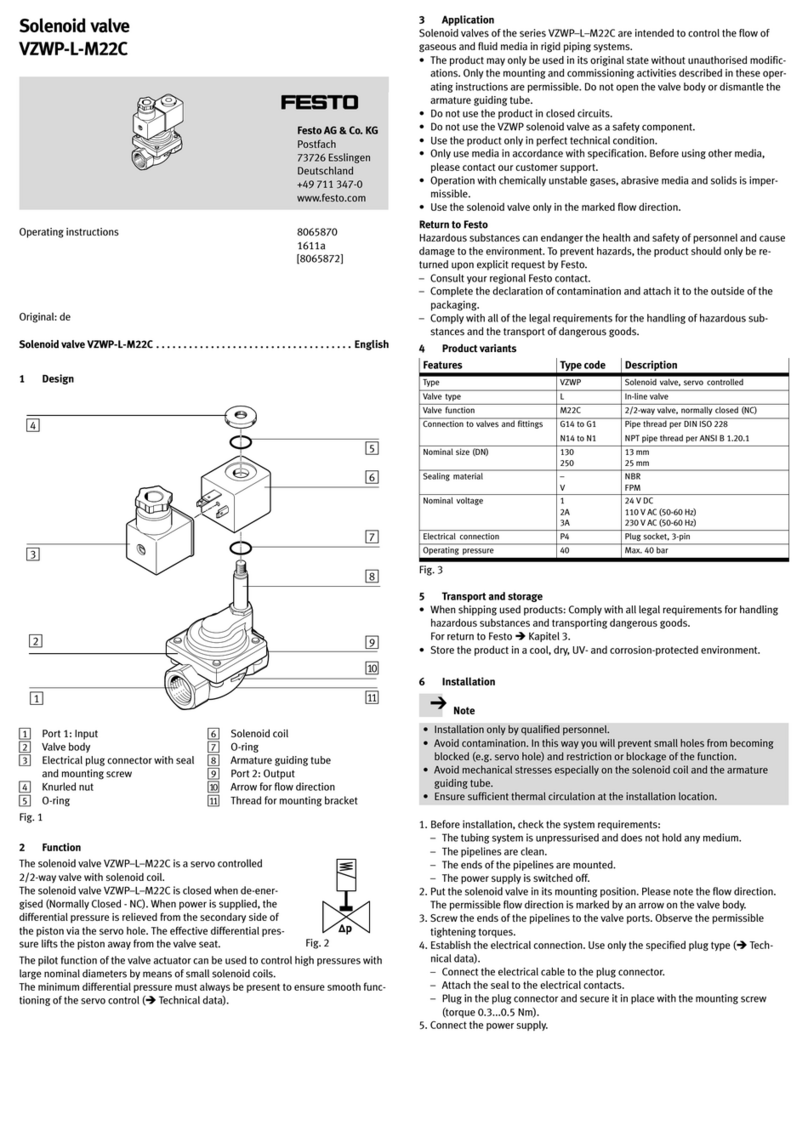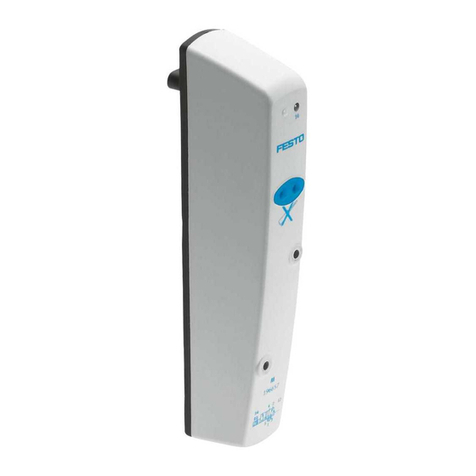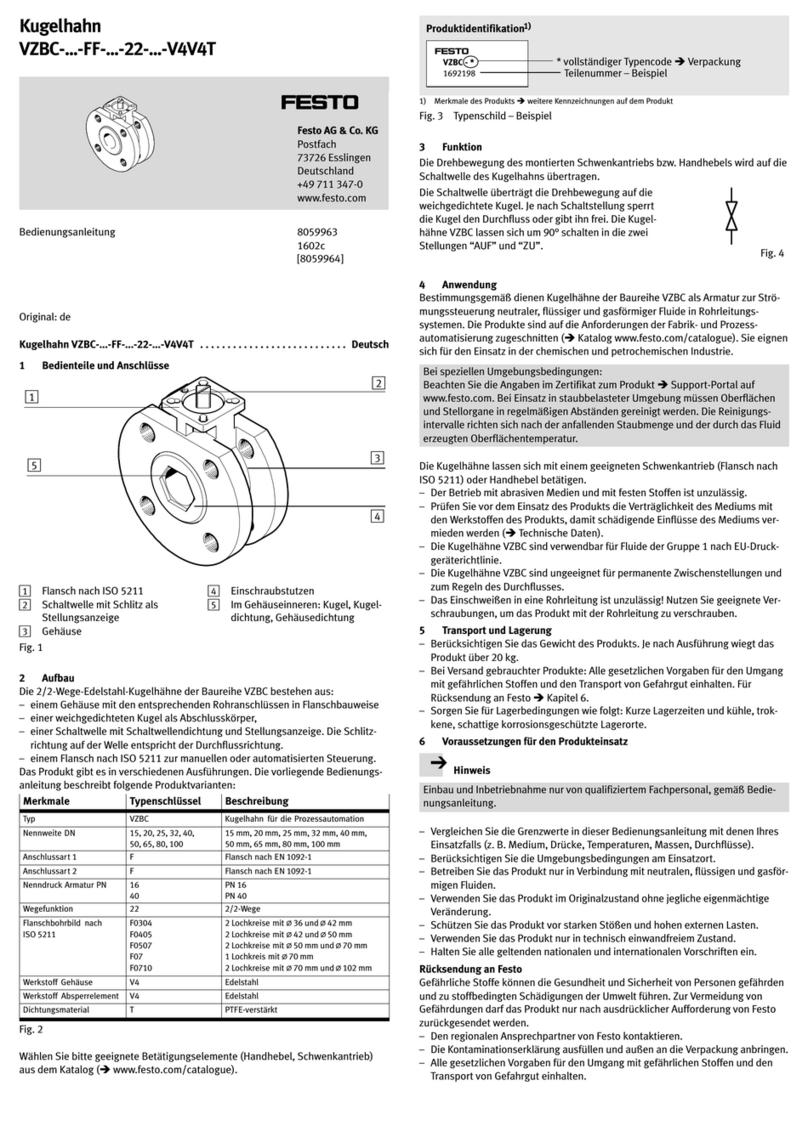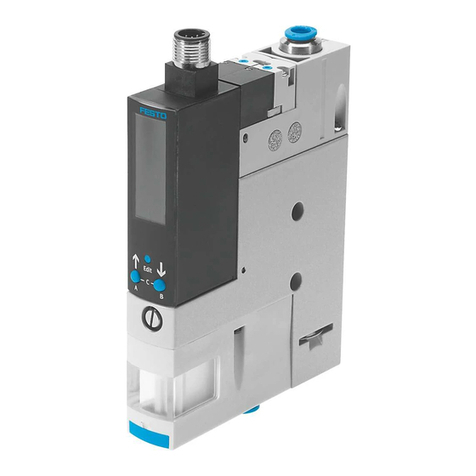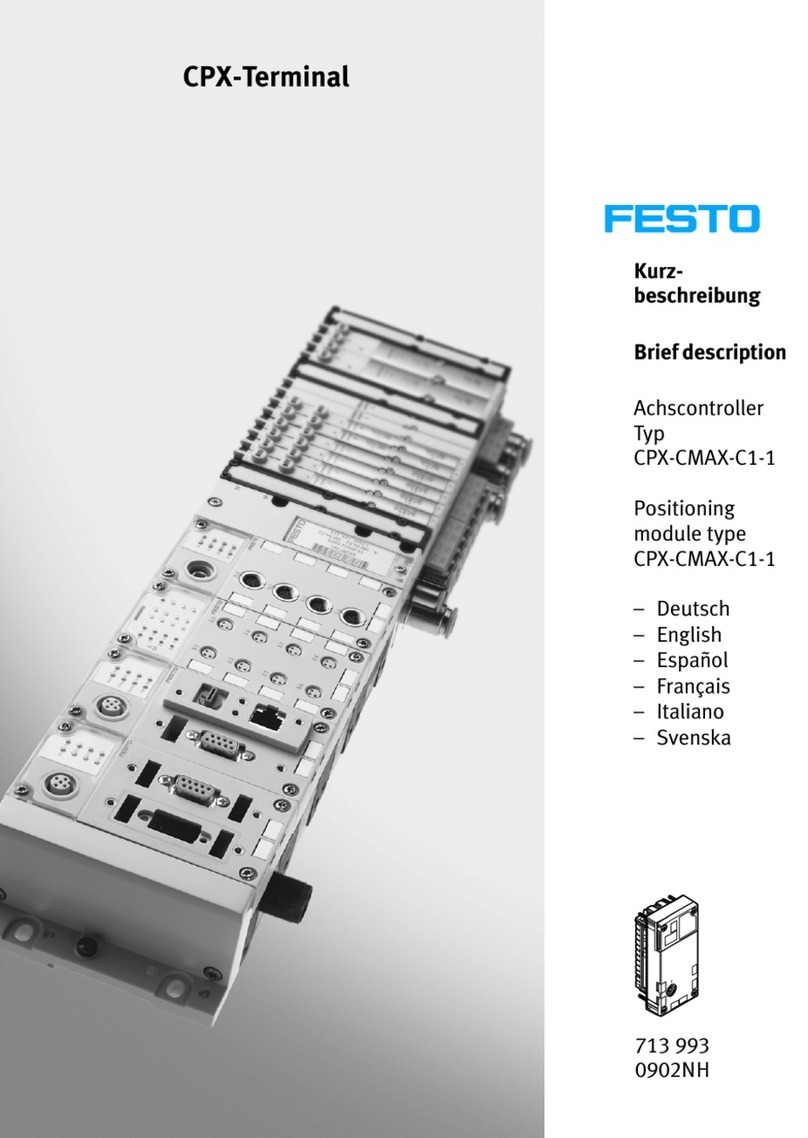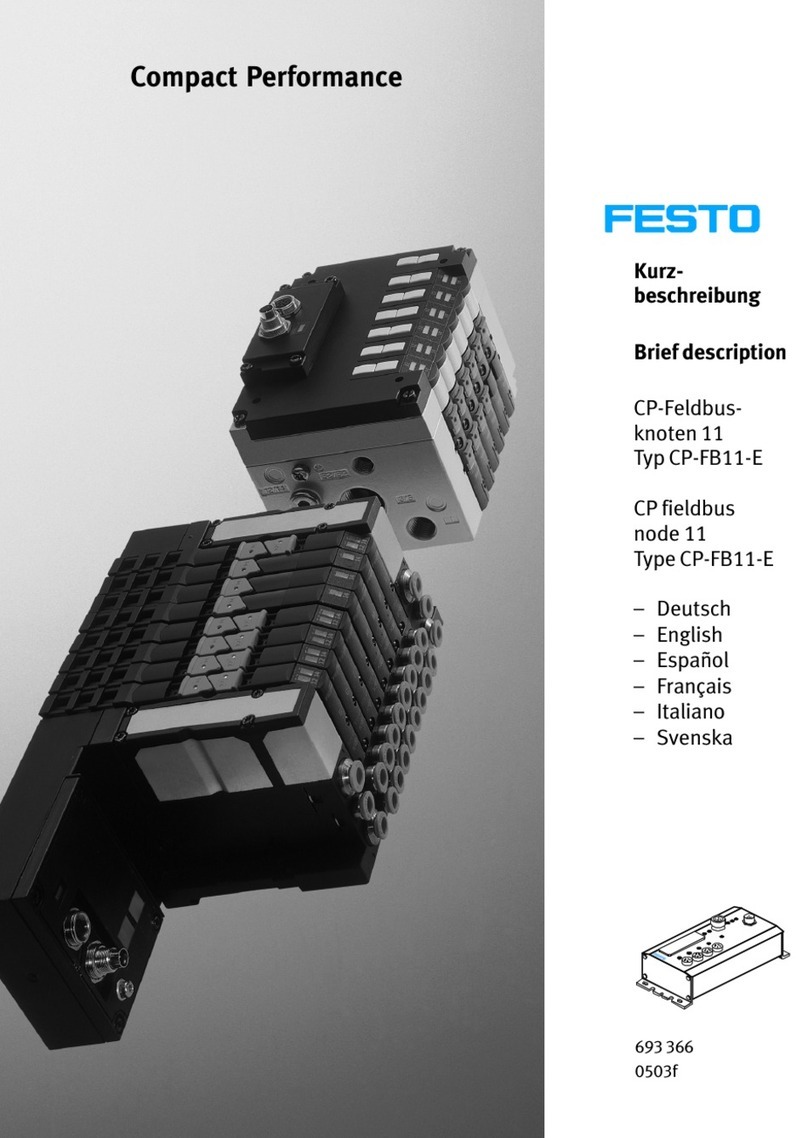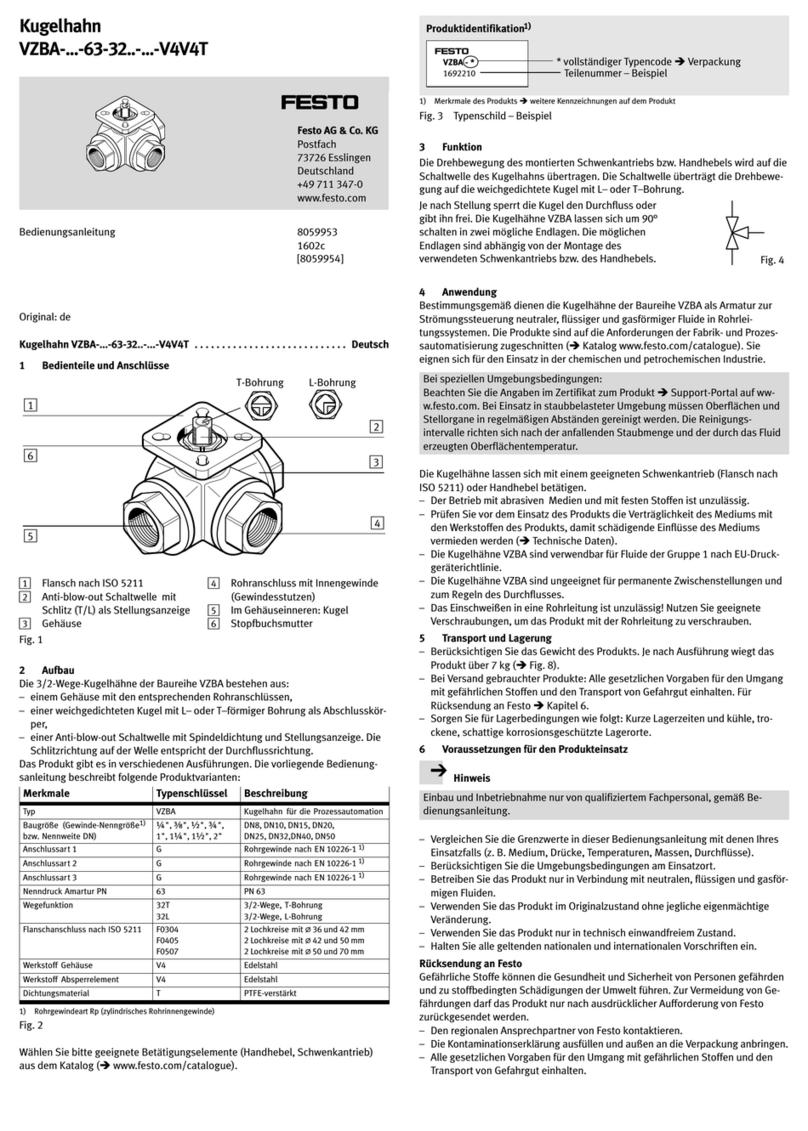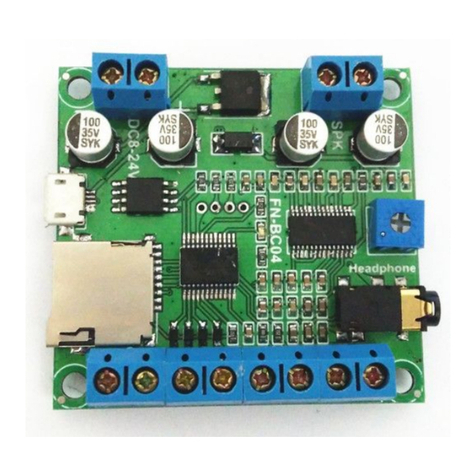
Angle seat valve with diaphragm actuator
VZXA-...-M
Festo AG & Co. KG
Ruiter Straße 82
73734 Esslingen
Germany
+49 711 347-0
www.festo.com
Instructions | Operating
(Translation of the original instructions)
8082926
2018-02a
[8082928]
Angle seat valve with diaphragm actuator VZXA-...-M English................
1 About this document
This document describes the use of the above-mentioned product. It contains
additional information for the implementation of the product in safety-oriented
systems (safety handbook in accordance with IEC 61508).
For all available product documentation èwww.festo.com/pk
1.1 Specified standards
Version status
IEC 61508-1:2010 part 1, 2, 4…7 IEC 61511:2016
Fig. 1
2 Safety
2.1 General safety information
The product may only be used in its original status without unauthorized modi
fications.
Use the valve only in the flow direction indicated.
Only use the product if it is in perfect technical condition.
Take into consideration the ambient conditions at the location of use.
Media
Only use media in accordance with specifications èTechnical data.
Use only media that will not cause dangerous reactions if mixed.
Do not operate the product with chemically unstable gases, abrasive media
or solid materials.
If water is used: up to approx. 1000 ppm of chloride content is permitted.
Avoid tensile stresses.
If aggressive media are used: limit medium temperature to 65 °C.
Actuator
Do not open the actuator (pressure in the actuator or loaded spring).
Avoid mechanical stresses on the valve. Do not use the actuator as a lever.
Return to Festo
Hazardous substances can endanger the health and safety of personnel and cause
damage to the environment. To prevent hazards, the product should only be re
turned upon explicit request by Festo.
Consult your regional Festo contact.
Complete the declaration of contamination and attach it to the outside of the
packaging.
Comply with all legal requirements for handling hazardous substances and
transporting dangerous goods.
2.2 Intended use
The angle seat valve VZXA-...-M is intended to shut-off gaseous or liquid media in
piping systems.
To control liquid media, use only the product variant VZXA-B... (media flow under
valve seat).
2.3 Training of specialized personnel
Work on the product should only be conducted by qualified personnel. The quali
fied personnel must be familiar with installation of process automation systems.
3 Further information
– Accessories èwww.festo.com/catalogue
– Spare parts èwww.festo.com/spareparts
4 Service
Contact the regional Festo contact if you have technical questions
èwww.festo.com.
5 Information on functional safety
5.1 Attainable safety rating
The product is suitable for use as an element in a safety-related system in accord
ance with IEC 61511.
– In low-demand mode up to SIL 2
– In high-demand mode up to SIL 2.
Taking into account the necessary minimum hardware fault tolerance from HFT = 1,
the product can also be used up to SIL 3 with a redundant design of the entire system.
Note
The suitability for certain applications can only be determined in connection with
the evaluation of further components of the subsystem.
5.2 Safety function
Single-acting valves
The safety function consists of taking the initial position on request. The request is
made by removing the operating pressure.
– Valves with control function NO: The valve opens completely and remains open
until operating pressure is applied.
– Valves with control function NC: The valve closes completely and remains closed
until operating pressure is applied.
Double-acting valves
The safety function consists of taking the desired position on request. Supply of
external energy is required for this.
5.3 Operating conditions
– General notes on safe operation èChapter 2.
– Periodic tests (performance test) èChapter 12.
– Ambient conditions and additional technical specifications èChapter 16.
5.4 Limitations of application
The service life is not limited if the operating conditions are complied with.
– Maximum admissible interval for a complete performance test: seven years.
5.5 Characteristic values
Safety standards (in accordance with IEC 61508) Value
Route of assessment 2H/ 1S
Type of Sub System Type A
Mode of Operation Low Demand and
High Demand
Assumed Test Interval Ti1 a
Confidence Level 1-á95 %
Hardware Fault Tolerance HFT 0
Lambda Dangerous ëD1,36 · 10-7 / h
Lambda Dangerous Undetected ëDU 1,36 · 10-7 /h
Mean Time To Dangerous Failure MTTFD7,37 . 106h
Proof Test Coverage PTC 95 %
Low Demand Mode
Assumed Demands per Year nop 1 / a
Average Probability of Failure on Demand PFDavg 5,95 · 10-4
High Demand Mode
Assumed Demands per Year nop 1 / h
(8760 / a)
Probability of dangerous Failure per Hour PFH 1,36 · 10-7 / h
Fig. 2
